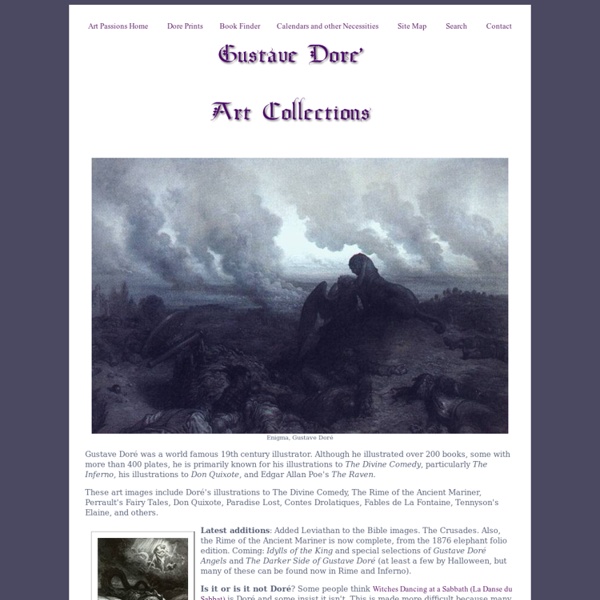



The World of Dante Gustave Doré's (1832-1883) illustrations and Dante's Divine Comedy have become so intimately connected that even today, nearly 150 years after their initial publication, the artist's rendering of the poet's text still determines our vision of the Commedia. Planned by Doré as early as 1855, the Dante illustrations were the first in a series he referred to as the "chefs-d'oeuvre de la littérature." In addition to Dante, Doré's list of illustrated great works included Homer, Ossian, Byron, Goethe, Racine, and Corneille. The placement of Dante's Commedia at the top of this list reflects the poet's popularity within mainstream French culture by the 1850s. Finding it difficult to secure a publisher willing to take on the expense of producing the expensive folio edition the artist envisioned, Doré himself financed the publication of the first book of the series, Inferno, in 1861. Of Doré's literary series, few enjoyed as great a success as his Commedia illustrations.
Gustave Doré Paul Gustave Louis Christophe Doré (/dɔːˈreɪ/; French: [ɡystav dɔʁe]; 6 January 1832 – 23 January 1883) was a French artist, printmaker, illustrator and sculptor. Doré worked primarily with wood engraving. Biography[edit] «Le Christ quittant le prétoire» Doré was born in Strasbourg on 6 January 1832. By age five, he was a prodigy troublemaker, playing pranks that were mature beyond his years. Les Oceanides Les Naiades de la mer, 1860s In 1853, Doré was asked to illustrate the works of Lord Byron.[2] This commission was followed by additional work for British publishers, including a new illustrated English Bible. In the 1860s he illustrated a French edition of Cervantes's Don Quixote, and his depictions of the knight and his squire, Sancho Panza, have become so famous that they have influenced subsequent readers, artists, and stage and film directors' ideas of the physical "look" of the two characters. The completed book, London: A Pilgrimage, with 180 engravings, was published in 1872.
Francisco Goya Biography[edit] Early years[edit] Francisco de Goya -supposed self-portrait Goya was born in Fuendetodos, Aragón, Spain, on 30 March 1746 to José Benito de Goya y Franque and Gracia de Lucientes y Salvador. He then relocated to Rome, where in 1771 he won second prize in a painting competition organized by the City of Parma. Goya married Bayeu's sister Josefa (he nicknamed her "Pepa") on 25 July 1773. Mid-career[edit] In 1783, the Count of Floridablanca, a favorite of Charles III of Spain, commissioned Goya to paint his portrait. Goya received orders from many of the Spanish nobility. At some time between late 1792 and early 1793, a serious illness (the exact nature of which is not known) left Goya deaf, and he became withdrawn and introspective. Later years[edit] French forces invaded Spain in 1808, leading to the Peninsular War of 1808–1814. The Milkmaid of Bordeaux, 1825–27, is the third and final Goya portrait which may depict Leocadia Weiss. Work[edit] Maja[edit] The Nude Maja, ca. 1800.